 5
5
HIS R7 260X iPower IceQ X² 2 GB Review
Fan Noise »Power Consumption
Cooling modern video cards is becoming more and more difficult, especially with users asking for a quiet cooling solution, which is why engineers are now paying much more attention to the power consumption of new video-card designs. An optimized fan-profile is also one of the few things board vendors can create to impress with reference designs where they are prohibited from making changes to the thermal solution or components on the card.For this test, we measured the power consumption of the graphics card via the PCI-Express power connector(s) and PCI-Express bus slot only. A Keithley Integra 2700 digital multimeter with 6.5-digit resolution was used for all measurements. Again, the values here only reflect the card's power consumption as measured at its DC inputs, not that of the whole system.
We chose Crysis 2 as a standard test representing typical 3D gaming usage because it offers the following: very high power draw; high repeatability; is a current game that is supported on all cards because of its DirectX 9 roots; drivers are actively tested and optimized for it; supports all multi-GPU configurations; test runs in a relatively short time and renders a non-static scene with variable complexity.
Power consumption results of other cards on this page are measurements of the respective reference design.
Our results were based on the following tests:
- Idle: Windows 7 Aero sitting at the desktop (1280x1024, 32-bit) with all windows closed and drivers installed. Card left to warm up in idle mode until power draw was stable.
- Multi-monitor: Two monitors connected to the tested card, both using different display timings. Windows 7 Aero sitting at the desktop (1280x1024 32-bit) with all windows closed and drivers installed. Card left to warm up in idle mode until power draw was stable.
- Blu-ray Playback: Power DVD 9 Ultra was used at a resolution of 1920x1080 to play back the Batman: The Dark Knight disc with GPU acceleration turned on. Playback started around timecode 1:19, which has the highest data rates on the BD with up to 40 Mb/s. Playback was left running until power draw converged to a stable value.
- Average: Crysis 2 at 1920x1080, Extreme profile, representing a typical gaming power draw. Average of all readings (12 per second) while the benchmark was rendering (no title/loading screen).
- Peak: Crysis 2 at 1920x1080, Extreme profile, representing a typical gaming power draw. Highest single reading during the test.
- Maximum: Furmark Stability Test at 1280x1024, 0xAA. This results in a very high no-game power-consumption that can typically be reached only with stress-testing applications. The card was left running the stress test until power draw converged to a stable value.
During gaming, power consumption is almost the same, too. The only differences seem to be caused by different operating temperatures and random production variances.
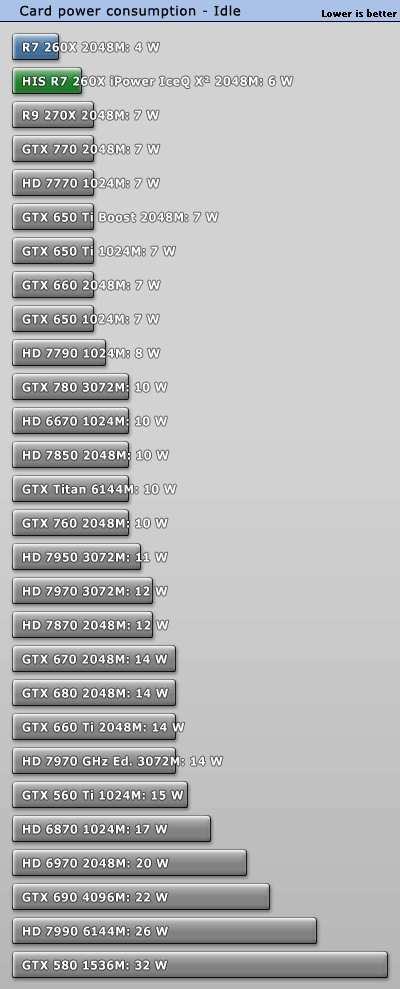
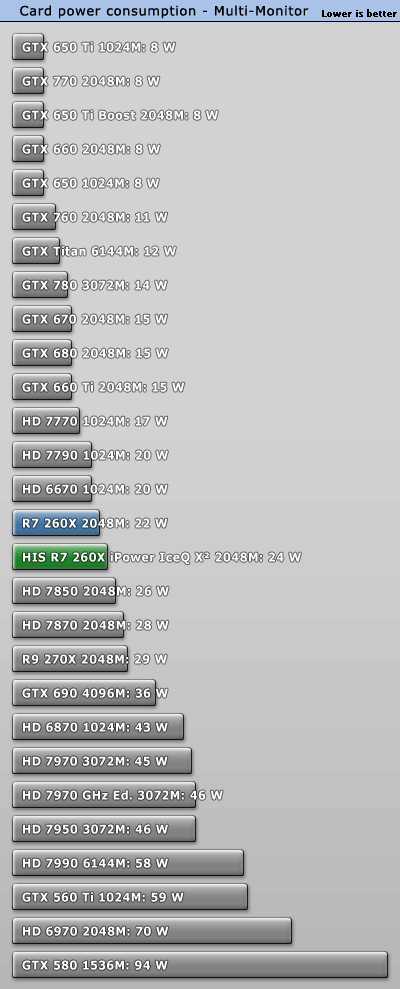
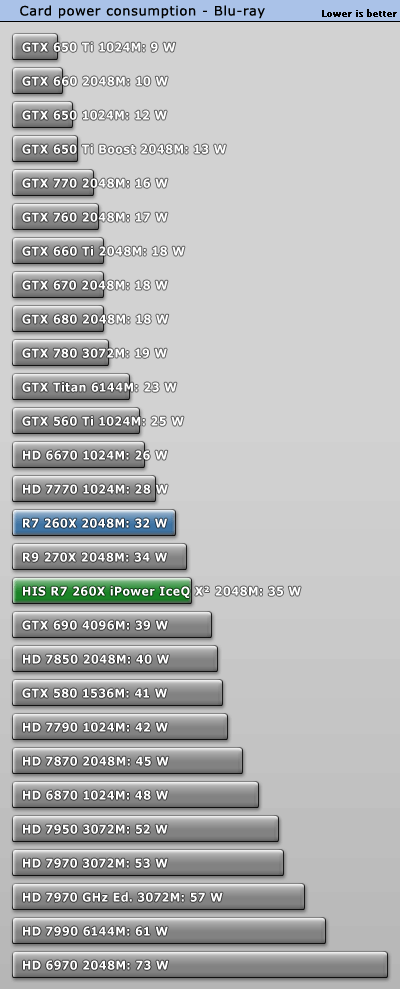
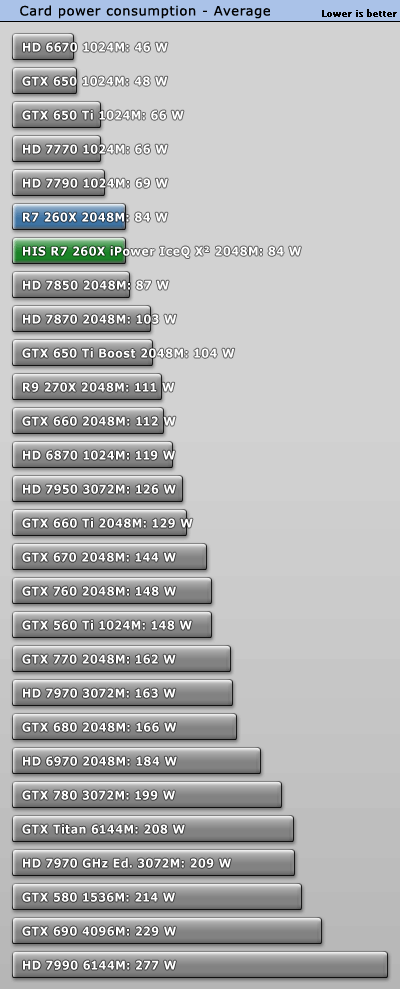
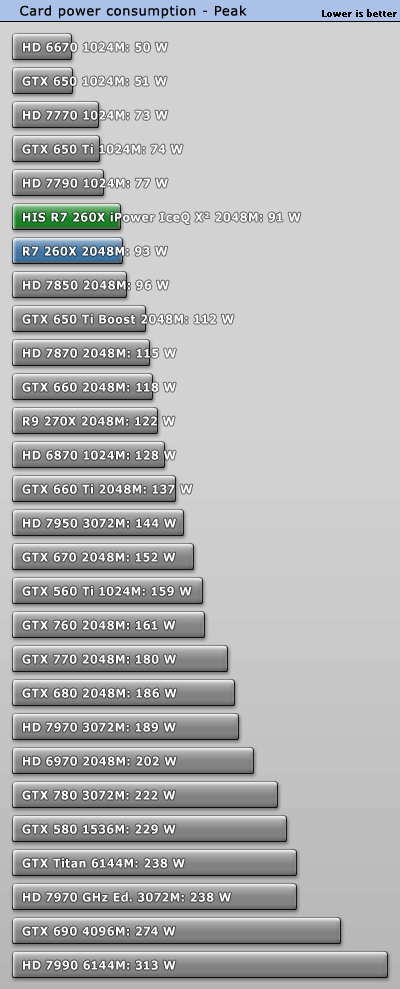
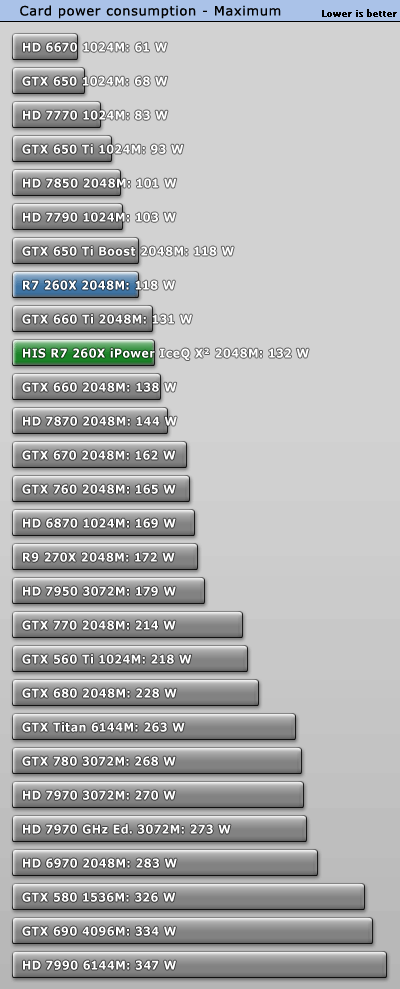
Aug 1st, 2025 06:29 CDT
change timezone
Latest GPU Drivers
New Forum Posts
- PNY 4070 hotspot 107℃ during gaming (15)
- Modded vBIOS for RTX 2060 MAX-Q (1)
- What's your latest tech purchase? (24424)
- 7980XE don't show info in cpu metter gadget (2)
- Windows 10 Vs 11, Which one to choose? (264)
- Blender 4.0.1 BMW27 demo test (21)
- Samsung 870 EVO - Beware, certain batches prone to failure! (1297)
- Board Power Limit (1)
- 3DMARK "LEGENDARY" (354)
- weird HDD sound (not click of death) (1)
Popular Reviews
- MSI Claw 8 AI+ A2VM Review
- Lenovo Legion 5i (15IRX10) Review - Feature-Rich and Wallet Friendly
- ASUS ROG Crosshair X870E Apex Review
- Herman Miller Logitech G Embody Review - No Pain, No Gain
- Orbital Pathfinder Review
- Montech X5 Review
- Upcoming Hardware Launches 2025 (Updated May 2025)
- Lian Li O11 Dynamic Mini V2 Review
- Noctua NF-A12x25 G2 PWM Fan Review
- AMD Ryzen 7 9800X3D Review - The Best Gaming Processor
TPU on YouTube
Controversial News Posts
- AMD's Upcoming UDNA / RDNA 5 GPU Could Feature 96 CUs and 384-bit Memory Bus (137)
- AMD Radeon RX 9070 XT Gains 9% Performance at 1440p with Latest Driver, Beats RTX 5070 Ti (131)
- Intel "Nova Lake-S" Core Ultra 3, Ultra 5, Ultra 7, and Ultra 9 Core Configurations Surface (110)
- DDR6 Memory Arrives in 2027 with 8,800-17,600 MT/s Speeds (102)
- NVIDIA to Debut GeForce RTX 50-series SUPER GPUs by Christmas (98)
- AMD Sampling Next-Gen Ryzen Desktop "Medusa Ridge," Sees Incremental IPC Upgrade, New cIOD (97)
- Intel CEO Confirms SMT To Return to Future CPUs (95)
- NVIDIA Becomes First Company Ever to Hit $4 Trillion Market-Cap (94)